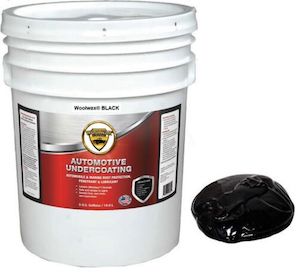
Curated with aloha by
Ted Mooney, P.E. RET

The authoritative public forum
for Metal Finishing 1989-2025

-----
Bedliner-like coating on my automobile frame
Q. Hi my name is Jeff. I am restoring a 1967 Pontiac GTO. It looks like a spray-in bed liner was used to paint the frame. Would you have any suggestions on how to chemically remove the spray in bed liner so I can repaint it?
Jeff Leonas- Condon Montana
January 6, 2022
A. Hi Jeff.
Dealer-applied extras have probably been with us as long as there have been cars. In the 1950's and 1960's "undercoating" was one of them -- the application of a tar-like coating to the underside of the car as a corrosion preventative. Of course, there have been arguments since way back then as to whether they are effective in reducing corrosion or they increase it.
These days frames are galvanized/galvannealed and then electrocoated, making 'undercoating' a rarity without actually resolving the question of whether it helped or hurt. There are probably examples of each. There are firms like Ziebart who still offer it.
I don't know the best solvent to remove it, but I would concur that it's past it useful life and should be removed and the frame refinished.
Luck & Regards,

Ted Mooney, P.E. RET
Striving to live Aloha
finishing.com - Pine Beach, New Jersey
January 2022
Q, A, or Comment on THIS thread -or- Start a NEW Thread
